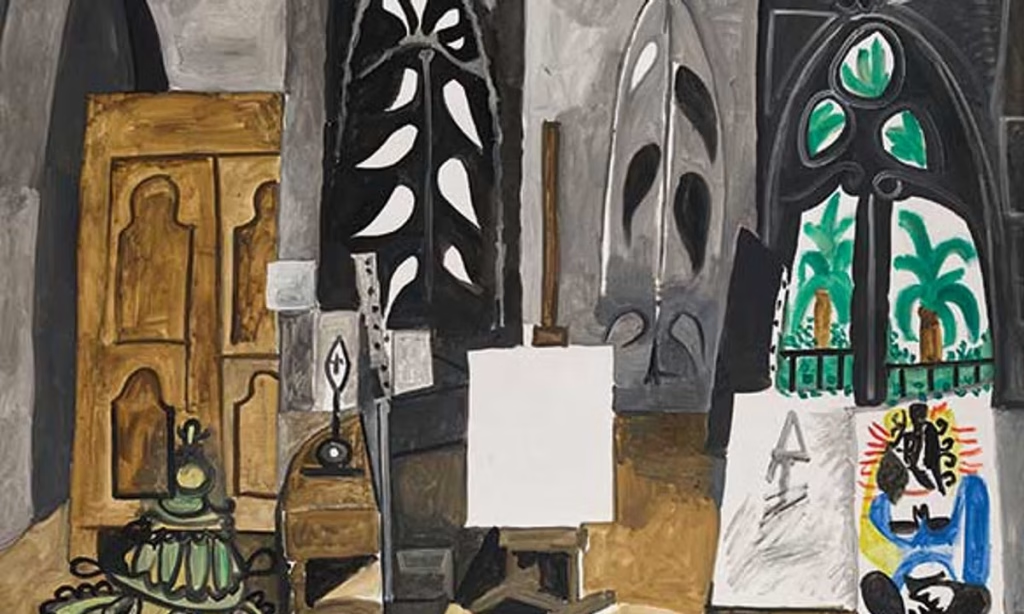In the annual cascade of shows about Pablo Picasso, celebrating weeping women, bull fighting or Cubist bottles, the National Gallery of Ireland is focusing on the spaces where these famed works were created.
“The exhibition will be intimate,” says the museum’s director Caroline Campbell, and will provide “a chance not just to get into his mind but his being, the spaces where the art was made and how the works were put together”. These spaces were also archives and repositories of treasures (Jean Cocteau called him “the king of scavengers”) as well as places where the artist displayed himself and his work to visitors and photographers.
The gallery owns just one painting by Picasso, Still Life with a Mandolin (1924). The night scene was painted in the fishing village of Juan-les-Pins in the south of France, where Picasso had to pay his landlord 800 francs as compensation for painting on the walls of the garage, which had become his temporary studio. There is no record of what happened to those murals, which could probably now buy the house, the garage and half the village.
The show is being curated by the National Gallery of Ireland’s Janet McLean and Joanne Snrech from the the Musée Picasso in Paris. Scores of works will be going to Dublin from the latter museum. The works range from tiny pieces made using scraps of wood and metal when the artist first travelled to Paris in the early 1900s—poor and wandering among the cheap studios of Montmartre—to Musician, painted in 1972 at his final home and studio, the Notre-Dame-de-Vie farmhouse in the south of France.
Picasso created art in more than 100 spaces, but the show focuses on the most important, their atmospheres recreated in paint (such as his studio at La Californie near Cannes), film and photographs, including some of the most famous taken by his then-mistress Dora Maar during the creation of Guernica (1937) in a huge attic studio at Rue des Grands-Augustins in Paris. Although the exhibition concentrates on spaces rather than the weeping women, they are certainly there in the shadows, their entanglements with him invariably overlapping as Maar did with Picasso’s lover Marie-Thérèse Walter, whose portrait hung in an altar-like display in that Parisian studio. The one who got away was the artist Françoise Gilot, the mutual savagery of their separation belied by the tender painting in the show of their children Claude and Paloma sitting on the floor drawing, with a ghostly figure of Gilot—who had left Picasso months earlier—hovering protectively over them. His second wife, Jacqueline Roque, reigned over the last Mougins studio, where Picasso died in 1973 and she shot herself in 1986.
When photographers, including Lee Miller, Brassaï and Robert Capa, were invited in, Picasso carefully curated the spaces, rearranging possessions and paintings. “All portraits of me are lies,” he once said. But the curators regard the images of his studios as valuable insights into the work and mind of a difficult genius. In her catalogue essay Snrech writes: “These works can be seen both as a way of appropriating the space—and almost as self-portraits.”
• Picasso: From the Studio, National Gallery of Ireland, Dublin, 9 October-
22 February 2026
